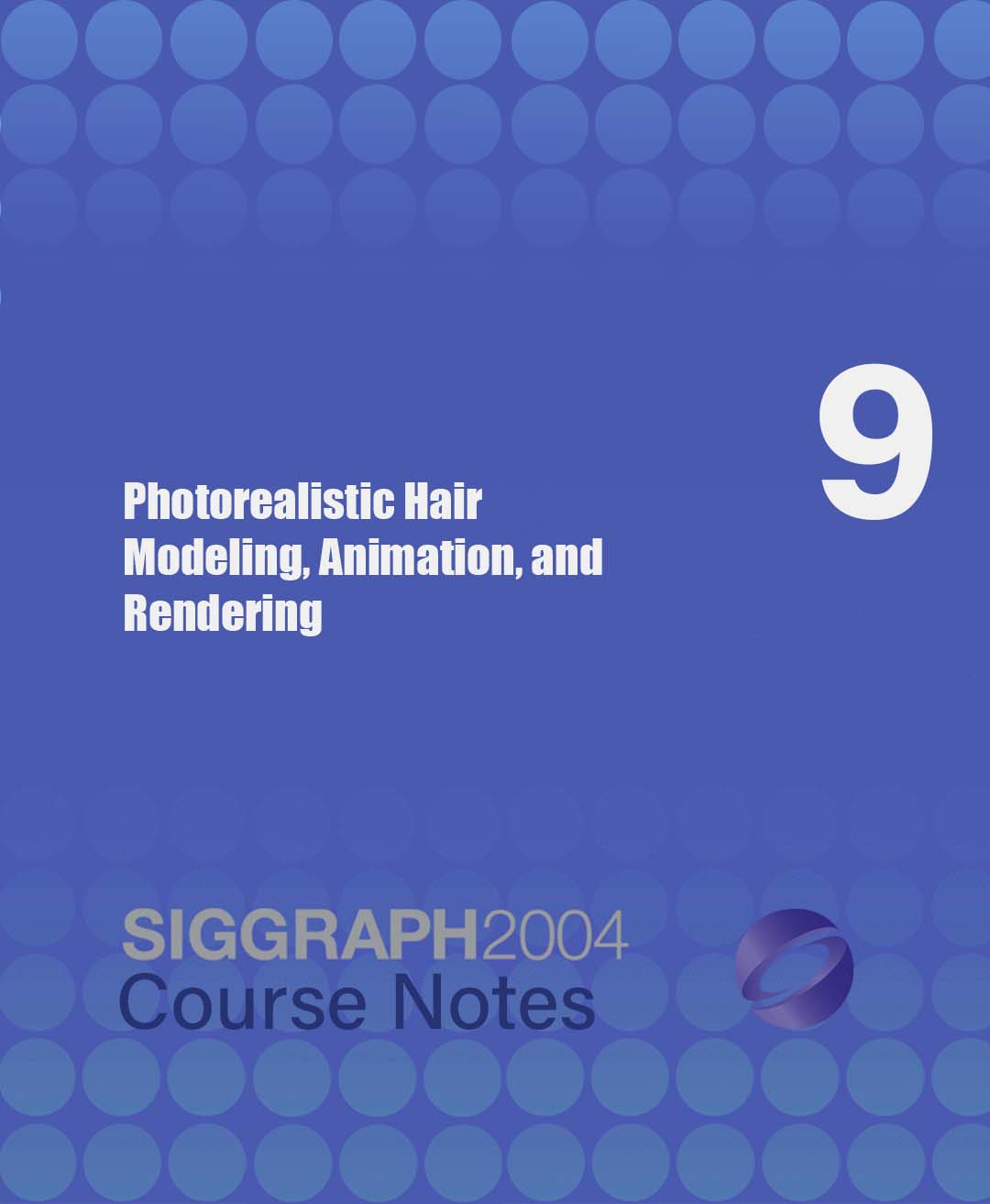“Photorealistic Hair Modeling, Animation, and Rendering” by Magnenat-Thalmann, Bruderlin, Hadap, Kim, Neulander, et al. …
Conference:
Type(s):
Title:
- Photorealistic Hair Modeling, Animation, and Rendering
Organizer(s):
Presenter(s)/Author(s):
- Nadia Magnenat-Thalmann
- Armin Bruderlin
- Sunil Hadap
- Tae-Yong Kim
- Ivan Neulander
- Hans Rijpkema
- Pascal Volino
- Yizhou Yu
Entry Number: 09
Abstract:
Prerequisites
Strongly recommended but not required: familiarity with the fundamentals of computer graphics, numerical linear algebra, differential equations, numerical methods, rigid-body dynamics, collision detection and response, physics-based illumination models, and fluid dynamics.
Intended Audience
Graduate students, researchers, computer graphics designers, special effects developers, technical directors, or anyone interested in physically based modeling for computer graphics.
Description
An in-depth review of the three main challenges in hair simulation: hairstyling, hair animation, and hair rendering. It includes an overview of various proposed solutions, their strengths and weaknesses, and the latest methodologies pertaining to each challenge.
Two novel shape-modeling paradigms for hairstyling (hair as streamlines of fluid flow and multi-resolution definitions of hair) are summarized. For hair dynamics, the course covers an elaborate and viable stiffness-dynamics model of an individual hair strand and presents two novel models for complex hair-hair, hair-body, and hair-air interactions. Hair-rendering topics include shading models, multiple scattering, and volumetric shadows. The course also reviews recent advances in programmable graphics hardware in the context of hair rendering and advanced issues in production hair rendering, self shadowing, and lighting models for short and long hair.
The course concludes with case studies of hair simulation in major academic and entertainment productions: simulation of ancient hairstyling in Pompeii (including a new approach to real-time modeling and animation), “Stuart Little 2,” “Harry Potter,” “Garfield,” “Scooby Doo2,” and “Chronicles of Riddick.”
Attendees will gain a broad understanding of the state-of-the art in hair simulation and learn a variety of working solutions that they can readily implement in their production pipelines. This course is a “boot camp” for aspiring computer graphics researchers who are interested in physically based modeling in computer graphics.





